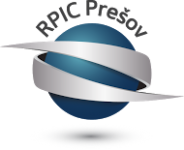Summary:
Independent researcher, resident in Portugal developed a cartesian 3D printer, which uses disposable plastics as a raw material that normally goes to waste or recycling containers. It acts as immediate recycling equipment, as a conventional 3D printer, as a laser engraved and as 3D scanner. The partner sought is a company that works with plastic, plastic recycling or that manufactures 3D printers and/or components. Research cooperation agreement or technical cooperation agreement are sought.
Description:
The existing 3D printers currently vary widely in format and functions. The 3D printing technology, specifically, is in an “open source” state, free of registration and accessible to anyone. A 3D printer operates by depositing layers of material instead of removing them. While the usual construction processes work by sculpting a block of material until reaching the desired final shape, or pouring melted material into a shape, 3D printing deposits layers of material on top of each other until the final object is obtained. Precisely for this reason, the 3D printer is the most suitable solid modeling equipment for recycling work. Several types of 3D printers on the market work with the most varied types of materials (metals, porcelain, organic materials ...). 3D printers using plastics are the least expensive and most suitable for recycling. They work with “filaments”, threads of various types of plastic, previously manufactured. The 3D printer uses a computer program to build the digital model to be printed and to guide the mechanical work of printing. As cartesian 3D printers use prefabricated plastic filaments as raw material, the concept of domestic recycling is lost in the obligation to acquire filaments, and in the impossibility of recycling domestic disposable plastics for this purpose. This invention has the basic task of recycling plastics directly and using them in 3D printing without the need to obtain prefabricated filaments. It has a small shredder that transforms household disposable plastics into fragments, which are used with the same function as filaments. These crushed plastics are placed in storage compartments, where they remain until they are used. The invention does not exclude, however the possibility of using prefabricated plastic filaments to feed it. These, when available, can be used as in a conventional 3D printer. The invention will use a laser to calibrate the equipment. In addition to being the most efficient calibration system today, the laser can be used as an engraver. Normally, 3D printers that use lasers to perform the calibration, use 250mW or 300mW laser emitters. The invention will use a laser emitter of higher power. Already having a cartesian spatial orientation mechanism, the invention will use the same system of movements on the X and Y axes to, with the laser, make cuts on sheets of paper and plastic objects, as well as make bas-relief markings on solid and thick plastic and wood objects. Depending on the density, even metal objects may be carved. In the internal structure of the invention, two miniature video cameras, similar to those used in cell phones, record the progress of printing (the user can follow by the cell phone or remote computer). They also can be used to scan real objects. This scan uses photos made of an solid object put inside the invention to generate a 3D file, which can be edited and used to print copies (or variations) of the scanned objects. Immediate applications aimed at domestic recycling in users' homes. Larger models can be installed in schools, public agencies and companies, aiming not only recycling itself, but also the manufacture of spare parts, creation of common use objects, artistic expression, etc.
The inventor is a journalist and amateur scientist. For over a decade, have been studying and working with 3D printing, which led him to specialization courses in mechatronics and electronics, and gave him the necessary knowledge to develop and patent this project.
The independent researcher, Brazilian by birth, resident in Portugal is looking for a company that already works with plastic, plastic recycling or a company that manufactures 3D printers and/or components. However, as it is not a costly research and development, any partner interested in the idea is welcome.
The inventor needs economic help for component research and development. He is looking for research cooperation agreement or technical cooperation agreement.
Type (e.g. company, R&D institution…), field of industry and Role of Partner Sought:
The ideal partner would be a company who already worked with plastics manufacturing or recycling.
The preparation of plastics for use the invention requires more research.
For that reason, the inventor is looking for a partner who can invest in research and acquisition of the necessary equipment to generate the prototype. With some resources and time, it will be able to develop the prototype. The help of other researchers would also be of great value.
The partnership can be established through a research cooperation agreement or technical cooperation agreement.
Stage of Development:
Concept stage
Comments Regarding Stage of Development:
The inventor does not have a laboratory and a prototype is not yet available.
All the experiments done so far have been done in-house, at his own expense, without external assistance.
IPR Status:
Patent(s) applied for but not yet granted
Comments Regarding IPR Status:
A patent was applied in Brazil and in Portugal. The European patent registration is ongoing.
External code:
TOPT20200310001








